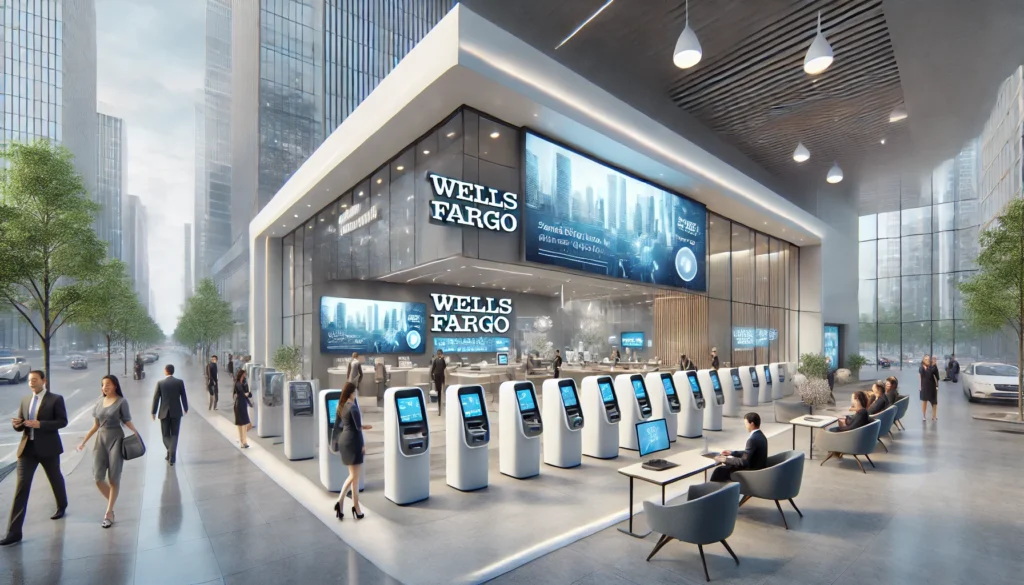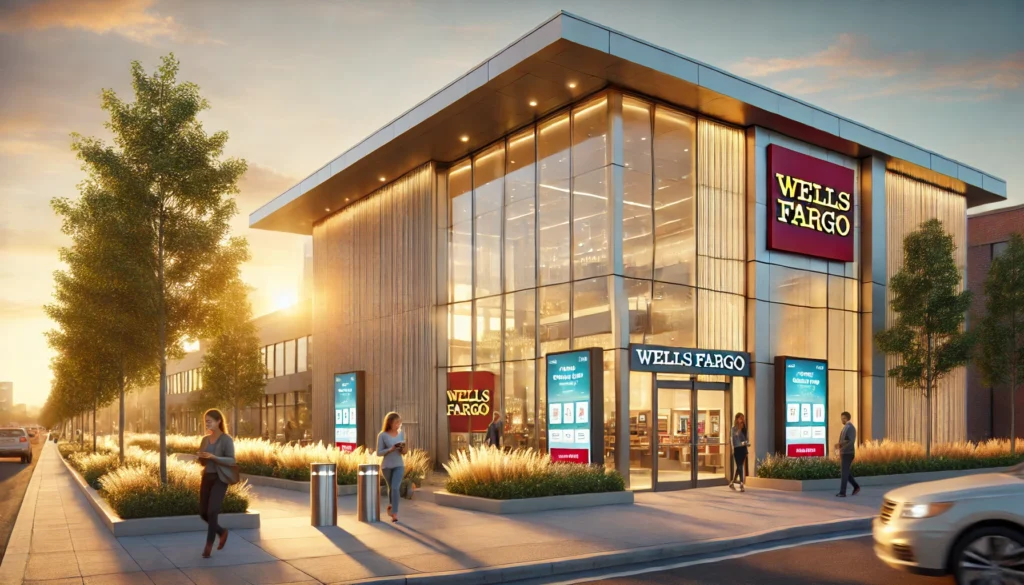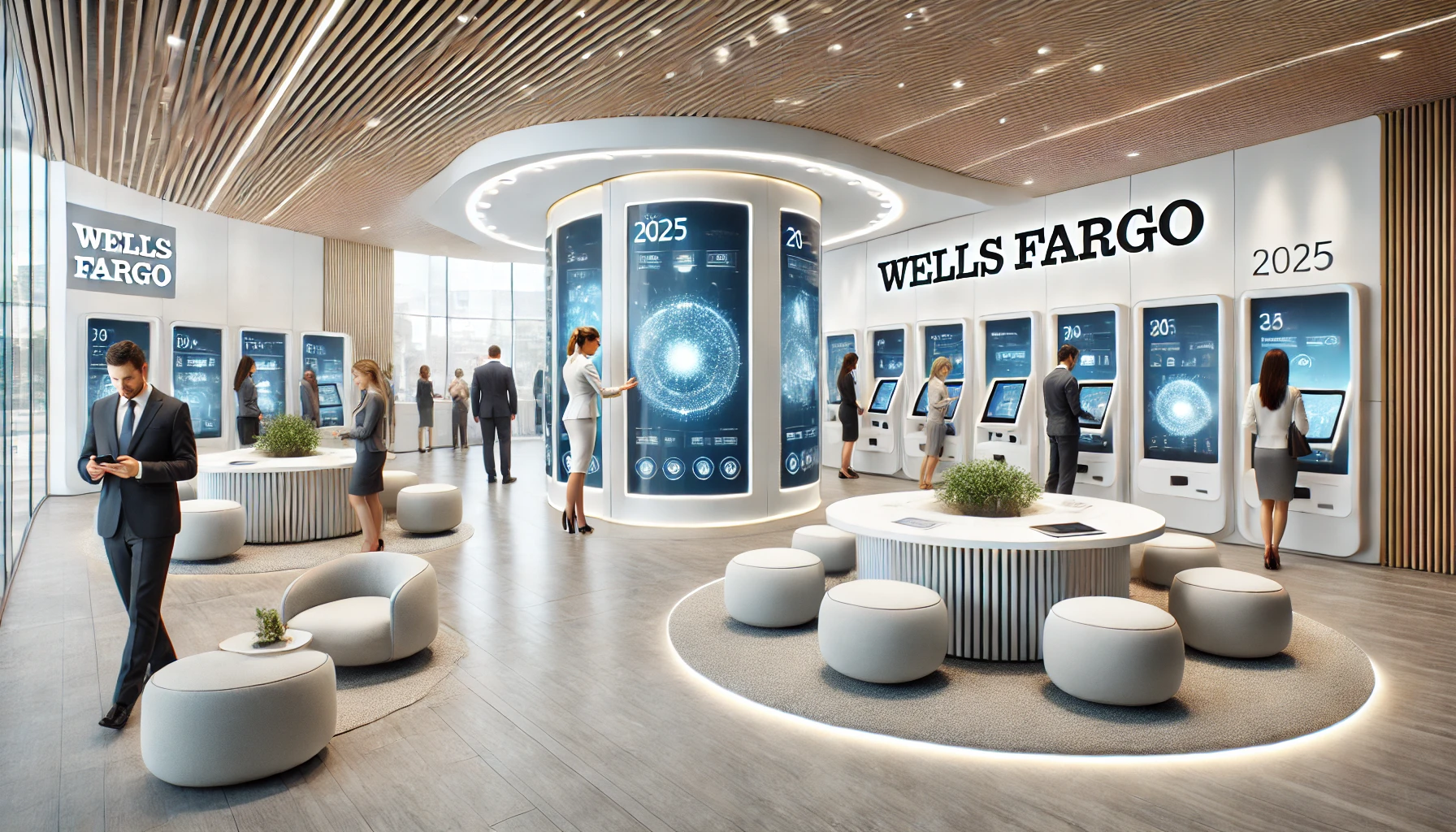Introduction: The Evolution of Bank Branches
In an era where digital banking dominates, Wells Fargo has been reimagining the role of physical branches through innovative redesigns that blend digital convenience with human expertise. The Wells Fargo branch redesign 2025 strategy takes this evolution further, creating true hybrid banking spaces that serve as community hubs while offering cutting-edge digital capabilities. While the 2013 mini-branch concept marked Wells Fargo’s early steps toward branch transformation 1, the 2025 strategy plans to make these hubs even more efficient and customer-friendly.
This comprehensive analysis explores Wells Fargo’s branch redesign strategy, examining how the bank balances physical and digital elements to meet changing customer expectations. We’ll compare traditional and modern branch layouts, analyze key hybrid banking trends, and showcase how Wells Fargo’s transformation reflects broader shifts in the financial services industry.
The Traditional Branch Model: Before Redesign

Historically, Wells Fargo branches followed conventional banking architecture:
- Large footprints: Traditional locations spanned 3,000-4,000 square feet, with some older branches reaching 10,000 square feet 1
- Paper-intensive workflows: Back-office areas dominated by paperwork processing
- Teller-centric layouts: Design focused on transaction counters with limited consultation spaces
- Standardized ATMs: Basic cash dispensing machines offering $20 bills
- Limited digital integration: Few self-service options beyond basic ATM transactions
These sprawling branches were expensive to operate, costing approximately $3 million to build 1, and often failed to meet evolving customer needs for convenience and digital integration.
Wells Fargo’s 2025 Branch Redesign: Key Features
Wells Fargo’s transformed branches represent a radical departure from traditional models, incorporating these innovative elements:
1. Compact, Efficient Footprints
The 2025 design continues the mini-branch concept introduced in 2013 but enhances it with smarter technology integration:
- 1,000 square foot layouts (one-third the size of traditional branches) 1
- Operating costs reduced by 40-50% compared to conventional branches 1
- Modular designs allowing flexible configurations for different markets
2. Advanced Self-Service Technology
Modern branches feature sophisticated self-service options that maintain human connection:
- Next-generation ATMs dispensing 1,1,5, 20,and20,and100 bills 1
- Instant issue debit card printers for immediate replacement
- Tablet-equipped bankers who can assist anywhere in the branch 1
- 24/7 access lobbies with full-service ATMs after hours 1
3. Digital-Physical Hybrid Spaces
The redesign eliminates traditional teller lines in favor of collaborative spaces:
- Consultation pods with large screens for secure document sharing
- Free wireless hotspots encouraging customers to use digital tools on-site 1
- Interactive kiosks for product exploration and account opening
- Paperless workflows through document scanning and e-signature capture 1
4. Community-Centric Design Elements
Recognizing branches as community touchpoints, Wells Fargo incorporates:
- Local artwork and design elements reflecting neighborhood character
- Flexible event spaces for financial workshops and community meetings
- Comfortable waiting areas resembling coffee shops rather than bank lobbies
Before-and-After: Branch Layout Transformation
| Traditional Branch Layout (Pre-2013) | 2025 Hybrid Branch Design |
|---|---|
| 3,000-10,000 sq. ft. footprint | 1,000 sq. ft. efficient layout |
| Dominant teller counters | Mobile bankers with tablets |
| Separated back-office areas | Paperless, open workflows |
| Basic ATM machines | Advanced multi-function ATMs |
| Limited digital integration | Seamless digital-physical flow |
| Formal consultation rooms | Informal collaboration spaces |
| Generic corporate aesthetic | Localized community design |
The Strategy Behind the Transformation
Wells Fargo’s branch redesign addresses several key industry challenges and opportunities:
1. Meeting Changing Customer Behaviors
Internal research revealed that while 80% of transactions don’t require staff assistance, 70% of customers still visit branches every six months 1. The hybrid model accommodates both preferences:
- Self-service options for routine transactions
- Expert assistance for complex needs like mortgages and investments
- Education spaces for financial literacy programs
2. Optimizing Real Estate Costs
By reducing branch sizes, Wells Fargo achieves significant cost savings:
- 50-60% lower operating expenses compared to traditional branches 1
- Ability to serve micro-markets previously unsuitable for full branches 1
- Two neighborhood branches can open for the price of one traditional location 1
3. Creating Competitive Differentiation
The redesign positions Wells Fargo as an innovator in physical banking:
- Technology showcase: Demonstrates digital leadership through in-branch tech
- Community presence: Maintains visibility despite digital migration
- Brand experience: Reinforces Wells Fargo as forward-thinking yet personal
Industry Trends in Hybrid Banking Experiences
Wells Fargo’s transformation reflects several broader trends in retail banking:
1. The “Phygital” Banking Movement
Banks worldwide are blending physical and digital (“phygital”) experiences through:
- Appointment scheduling via mobile apps before branch visits
- Video banking stations in branches for remote specialist consultations
- Digital signature pads replacing paper forms
2. The Rise of Micro-Branches
Financial institutions are following Wells Fargo’s lead with smaller formats:
- Pop-up branches in high-traffic retail locations
- Self-service kiosks in supermarkets and transit hubs
- Mobile branches serving rural and underserved areas
3. Branches as Advice Centers
With transactions moving digital, physical locations focus on value-added services:
- Financial planning studios
- Small business advisory centers
- Wealth management lounges
Challenges and Considerations in Branch Transformation

While Wells Fargo’s redesign offers numerous benefits, implementation presents challenges:
1. Staff Role Evolution
Branch employees must transition from transaction processors to:
- Technology guides helping customers use digital tools
- Financial consultants providing personalized advice
- Community ambassadors building local relationships
2. Technology Integration
Seamlessly connecting physical and digital channels requires:
- Unified customer data across all touchpoints
- Reliable infrastructure supporting advanced in-branch tech
- Ongoing updates to keep pace with digital innovation
3. Measuring Success
New metrics are needed beyond traditional branch KPIs:
- Consultation conversion rates
- Digital adoption metrics
- Community engagement impact
The Future of Wells Fargo’s Branch Network
Looking beyond 2025, Wells Fargo’s branch strategy will likely evolve further:
1. Expanded Specialized Formats
We may see branches tailored for specific needs like:
- Small business banking centers
- Wealth management studios
- Student financial hubs
2. Enhanced Personalization
Future branches could incorporate:
- Biometric authentication for seamless check-ins
- AI-powered recommendations based on customer profiles
- Augmented reality tools for product visualization
3. Deeper Community Integration
Branches may become:
- Co-working spaces with banking services
- Financial education centers for schools and nonprofits
- Incubators for local small businesses
Conclusion: Redefining Banking’s Physical Future
Wells Fargo’s branch revamp demonstrates that physical locations remain relevant in the digital age—but only when radically reimagined. By combining the efficiency of technology with the value of human expertise, Wells Fargo creates hybrid spaces that serve as:
- Convenient transaction points for everyday banking needs
- Trusted advice centers for complex financial decisions
- Community anchors fostering financial wellbeing
As the banking industry continues evolving, Wells Fargo’s 2025 branch strategy offers a compelling model for blending physical presence with digital innovation—proving that the future of banking isn’t about choosing between branches or apps, but creatively combining the best of both worlds.
Check out Yahoo Finance for more info on this subject. For more on digital banking, go look at our post on Neobank vs. Traditional Bank: Which is Right for You.



